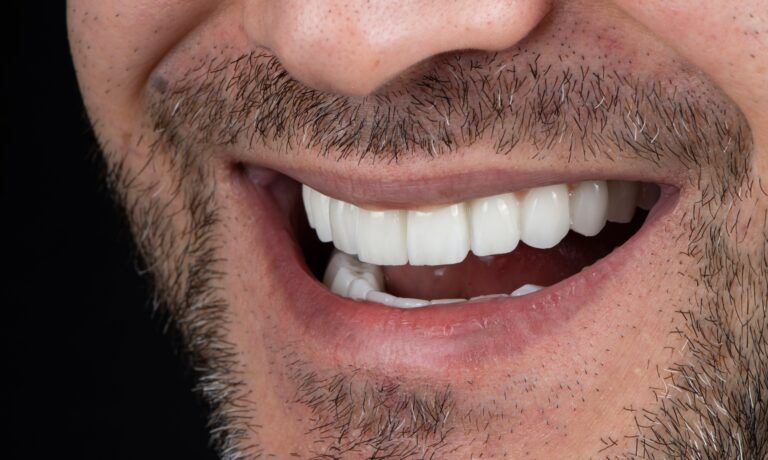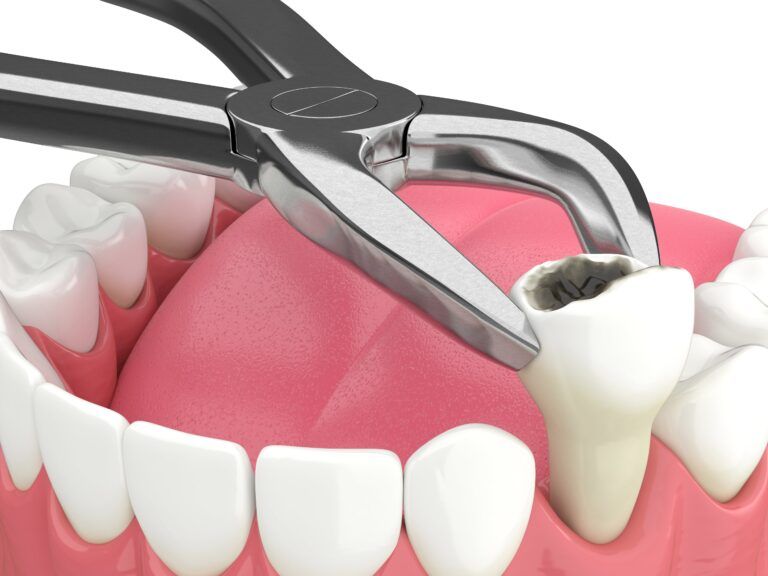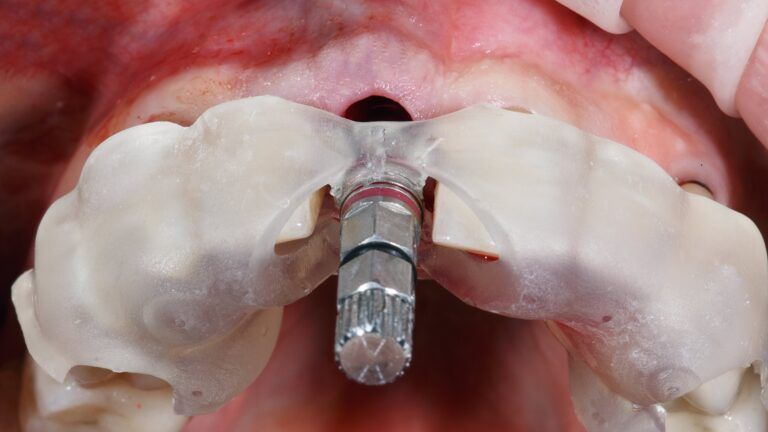Dental implants have revolutionized the field of dentistry, offering patients a durable and aesthetically pleasing solution for tooth replacement. But dental implants are not a standalone solution; they often require the use of dental ceramics to achieve optimal functionality and natural-looking aesthetics. These ceramics play a crucial role in creating a seamless integration between the implant and the surrounding oral structures. In this blog post, we’ll discuss the importance of dental ceramics and delve into the different types of dental ceramics used in coordination with dental implants, highlighting their unique properties and applications.
The Importance of Dental Ceramics
Dental ceramics play a crucial role in the success of dental implants by enhancing both the functional and aesthetic aspects of the restoration. Here’s why dental ceramics are important to dental implants:
1. Aesthetics: Dental ceramics are renowned for their ability to closely mimic the appearance of natural teeth. When a patient receives a dental implant, achieving a natural-looking smile is essential for their self-confidence and overall satisfaction. Ceramics can be custom shaded to match the patient’s existing teeth, ensuring a seamless integration between the implant-supported restoration and the surrounding dentition. This aesthetic harmony is especially important for front teeth, where visibility is high.

2. Biocompatibility: Dental ceramics are biocompatible materials that are well-tolerated by the human body. This is crucial for ensuring the long-term success of the dental implant. The ceramics used in dental restorations are designed to be non-reactive and non-allergenic, minimizing the risk of adverse reactions or complications.
3. Strength and Durability: While aesthetics are important, the functional aspect of the restoration cannot be overlooked. Dental ceramics offer varying degrees of strength and durability, making them suitable for different areas of the mouth. For instance, posterior teeth experience more biting force and require materials with greater strength, such as zirconia ceramics. This ensures that the implant-supported restoration can withstand the forces of chewing and grinding without fracturing.
4. Natural Bite Alignment: Dental ceramics can be precisely shaped and contoured to match the patient’s natural bite. This ensures proper occlusion, which is essential for distributing forces evenly during chewing and preventing excessive stress on the implant and surrounding tissues. A well-aligned bite is crucial for the long-term stability of the implant.
5. Tissue Compatibility: Dental ceramics can be designed to closely mimic the surface texture of natural teeth. This is particularly important for the soft tissues surrounding the implant site. The ceramics can be shaped and polished in a way that promotes healthy gum tissue integration around the restoration, reducing the risk of inflammation or infection.
6. Material Versatility: There are various types of dental ceramics available, each with its own set of properties. Dentists can choose the most appropriate type of ceramic based on the specific needs of the patient and the location of the implant. Whether it’s the strength of zirconia, the translucency of lithium disilicate, or the aesthetics of glass-ceramics, dental ceramics offer a versatile range of options.
7. Longevity: Dental ceramics are designed to be highly resistant to wear and staining, ensuring the longevity of the implant-supported restoration. With proper care and maintenance, ceramic restorations can last for many years, providing patients with a reliable solution for their tooth replacement needs.
In essence, dental ceramics bridge the gap between the implant and the natural oral structures, ensuring that the patient enjoys both functional and aesthetic benefits. Dentists carefully select and customize ceramics to create restorations that seamlessly blend in with the patient’s smile, enabling them to regain their confidence, oral function, and overall quality of life.
Types of Dental Ceramics
Porcelain Fused to Metal (PFM):
Porcelain fused to metal, or PFM, is one of the earliest and most commonly used dental ceramics. This material combines the strength of a metal framework with the aesthetics of tooth-colored porcelain. The metal framework is designed to fit precisely onto the dental implant abutment, while the porcelain veneer is carefully matched to the patient’s natural tooth color.
PFM restorations offer good mechanical properties, making them suitable for both anterior and posterior teeth. However, over time, the metal margin of the restoration can become visible at the gum line, leading to aesthetic concerns for some patients.

All-Ceramic Restorations:
All-ceramic restorations have gained immense popularity due to their exceptional aesthetics and biocompatibility. These restorations are made entirely of ceramic material, eliminating the issue of a visible metal margin. There are several types of all-ceramic materials commonly used in coordination with dental implants:
- Zirconia: Zirconia-based ceramics are known for their strength and durability. They are a great option for posterior teeth that require more chewing force. Zirconia restorations can be fabricated as single units or multi-unit bridges, offering flexibility in treatment planning.
- Lithium Disilicate: Lithium disilicate ceramics combine strength and translucency, making them an excellent choice for anterior teeth that require both aesthetics and durability. These restorations can be bonded directly to the implant abutment or to a custom zirconia or metal abutment.
- Leucite-Reinforced Ceramics: Leucite-reinforced ceramics strike a balance between aesthetics and strength. They are often used for single crowns and smaller bridges, offering good color-matching capabilities while maintaining sufficient mechanical properties.
Glass-Ceramics:
Glass-ceramic materials are renowned for their ability to mimic the optical properties of natural teeth. They offer exceptional aesthetics, making them a preferred choice for highly visible areas. Two common types of glass-ceramics used in implant dentistry are:
- Feldspathic Ceramics: Feldspathic ceramics are known for their lifelike translucency and versatility in shade matching. They are often used for veneers and anterior crowns. However, their lower strength compared to other ceramics makes them better suited for less demanding areas.
- Fluorapatite Glass-Ceramics: These ceramics offer a balance between strength and aesthetics. They are used for inlays, onlays, and anterior crowns, providing a harmonious blend of durability and natural appearance.
Hybrid Ceramics:
Hybrid ceramics are a relatively new class of dental materials that combine characteristics of both traditional ceramics and resin-based composites. They are designed to offer a balance between the strength and durability of ceramics and the aesthetic versatility of composites. However, it’s important to note that the composition and properties of hybrid ceramics can vary depending on the specific brand or manufacturer. Hybrid ceramics have gained popularity in dentistry, particularly for their applications in dental restorations such as crowns, bridges, and veneers.
In Conclusion
The world of dental ceramics is vast and diverse, offering a range of materials to suit each patient’s unique needs and preferences. When working in coordination with dental implants, these ceramics enhance both the functionality and aesthetic appeal of the restoration. The choice of ceramic material depends on factors such as the location of the implant, the patient’s occlusion (bite), and their aesthetic expectations.
As dental technology continues to advance, we can expect further improvements in ceramic materials, leading to even more precise, durable, and lifelike restorations. Dentists and dental technicians alike are continually refining their skills to provide patients with the best possible outcomes, ensuring that their smiles are not only functional but also radiant and confident.

Irfan Atcha, DDS, DICOI, DADIA at New Teeth Chicago Dental in Chicago, Illinois is a board-certified general dentist and a nationally recognized expert in dental implants, cosmetic dentistry, and sedation dentistry. Dr. Atcha is now serving patients in Naples, Bonita Springs and SW FL area with All-on-4 implants, teeth-in-a-day, same day dental implants and the complex zygomatic dental implants for the no-jaw bone solution approach. To schedule a consultation please email Dr. Atcha at teethforyou@gmail.com.





